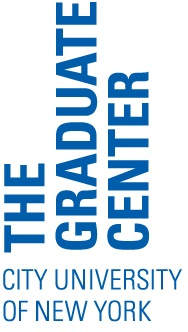Logos & the Academy: What Is a Dissertation? The Future Is Not Written (Part 2)
…the rainbow through the spider’s web.
Oh the precious stones that were hiding,—the flowers that were already peeking out—Rimbaud, “After the Flood”
As I suggested in part one of this post, a major takeaway from the recent forum What Is a Dissertation? is that a paradigm shift is currently underway for disciplines in the humanities and humanistic social sciences. One dimension of the shift is, specifically, this: the day of the dissertation published only to molder on the shelf of the university library—or shrink to a point of no extension in the proprietary oblivion of academic databases—is coming to a close, or at least should be. The openness of online open-access publication shows not only that interesting academic research can avoid the fatality of obsolescence, innovative use of online platforms such as Scalar, which allow for ongoing interactive use and manipulation of findings by other scholars, shows just how academic research can live for the full duration of its true currency and relevancy. A select few academics actually make money off of their publications. Most live by the usefulness of their work to other scholars, which is now being facilitated by tenuous lines of communication between otherwise isolated institutions, constituting at best a nebulous network–but this need not be. Failure to develop this nebulosity into a robust, multivalent network will be a grave, short-sighted mistake; it will also be inexcusable; doing so is an ought implying a can. In any case the paradigm is shifting. The spider and the hare: old school. The rainbow and the web: the academy’s future. Questions there are, of course, concerning the resiliency of digital, online publication. But such questions have always haunted our preserves of knowledge and learning. The Library of Alexandria burned down in a day. The time has come for the Information Age to come of age.
Moreover, there is no excuse for any scholar making large-scale claims about history, the archive, or culture to not make use of technologies capable of making novel sense of the informational cornucopia available to them by way of the numerous databases now amassed. The author of a book along the lines of George Kubler’s The Shape of Time: Remarks on the History of Things, which I love, would be remiss were he not now to subject his thesis to the test of evidence made possible by the combination of “big data” accessible in digital archives and the digital tools designed to analyze and visualize that data. Because certain questions elemental to such large-scale theses can now be subjected to evidence-based verification, the line between the hypotheses of science and the theses of the humanities is becoming increasingly blurred. But pseudoscience is pseudoscience; it has no place in any discipline; there is no excuse but temerity and fear for not braving the test of evidence. The proper business of the humanities for the future will emerge only by way of a willingness to acknowledge what appears to be the case in fact—in light of the love of what may be—which is to say by way of devotion to philosophy per se, in the spirit of which the Academy was given its name.
In my estimation this devotion was best in evidence last Friday in the person of Nick Sousanis, from Teachers College, Columbia. His work makes clear that what is called for by the call to adapt to the times is not simply technological savvy; unlike the other panelists, he makes only incidental use of digital and online tools and media in his work. In fact, his dissertation is constructed in a form having at least a century’s worth of tradition behind it: the comic book. Yet of the panelists’ work none seemed—to me, at least—more daring or more brilliant than his: by means of graphic narrative he argues, performatively, that visual thinking is fundamental to how we conceive of things and how we learn. I can think of no age in which the visuality of thought has not somehow taken center stage, from Plato worrying shadows on the wall to the stained glass stories of medieval cathedrals to Don Draper furrowing his brow in the smoke-slant sunlight of mad mid-century Manhattan. Why, then, have I never heard of research that constructs an argument concerning this subject by elaborating it in a medium and form actually (literally) capable of illustrating the nature of visual thinking? Institutional obstacles have almost certainly thwarted earlier attempts to innovate on academic research in a like manner (and such obstacles still exist; how the panelists overcame or thwarted institutional resistance was a key part of the forum’s discussion). Yet given the ever greater proliferation of images in day-to-day intercourse with multiple forms of media over the past century, it would seem evident that the image answers to something essential in the intellect. As the intellect happens to be that aspect of being human that specifically distinguishes the academic—i.e., the quintessential intellectual, if nothing else—the absence of innovation such as that exemplified by Mr. Sousanis must, then, in some sense and to some extent simply be a consequence of inertia.
Now that entropy has been found to have worn away not only the wheels but the very framework of the disciplines of the word, it is no longer possible to find repose in inertia. The times call for imagination, ingenuity, and daring. What is at stake is the meaning of meaning beyond the word: the logos that may forever be written, and written still in water, but that can no longer be said to live in the word alone, and will never again find a place in Heaven above.
All who have a stake in this future should take a look (if you have not already done so) at the Report of the MLA Task Force on Doctoral Study in Modern Language and Literature.
— Jared Keel



